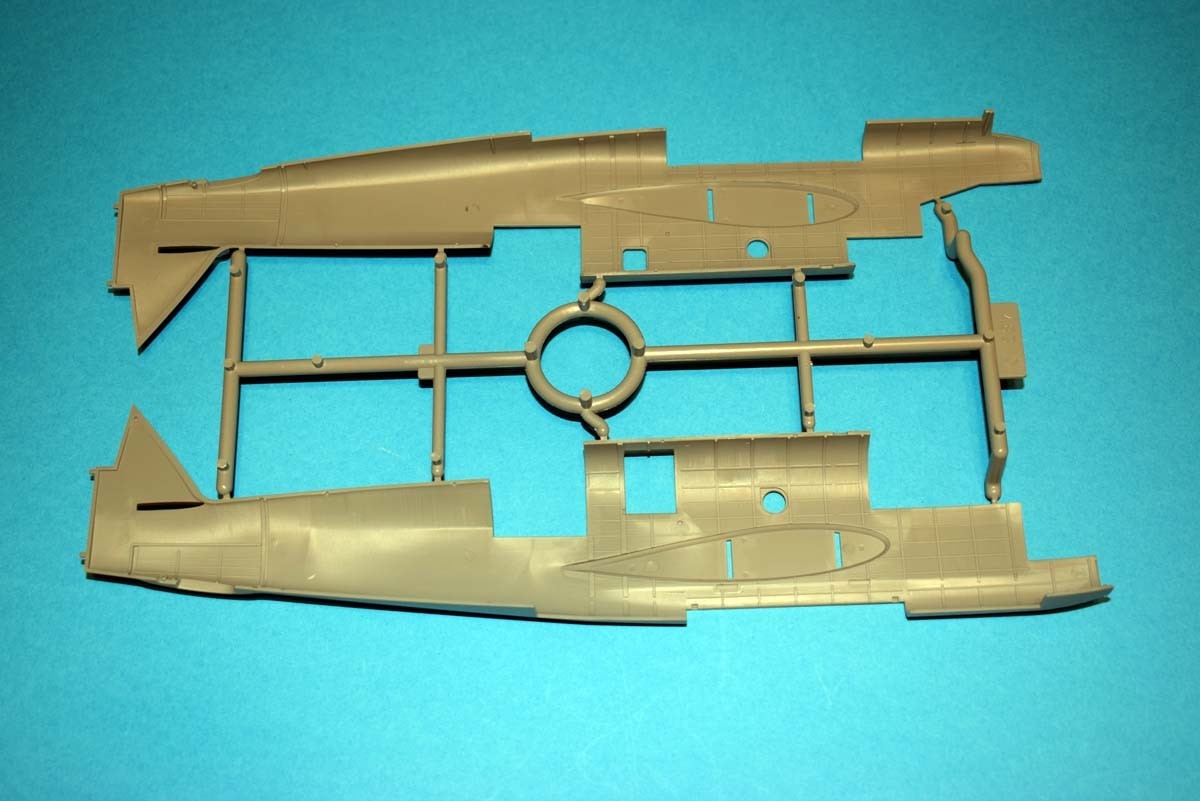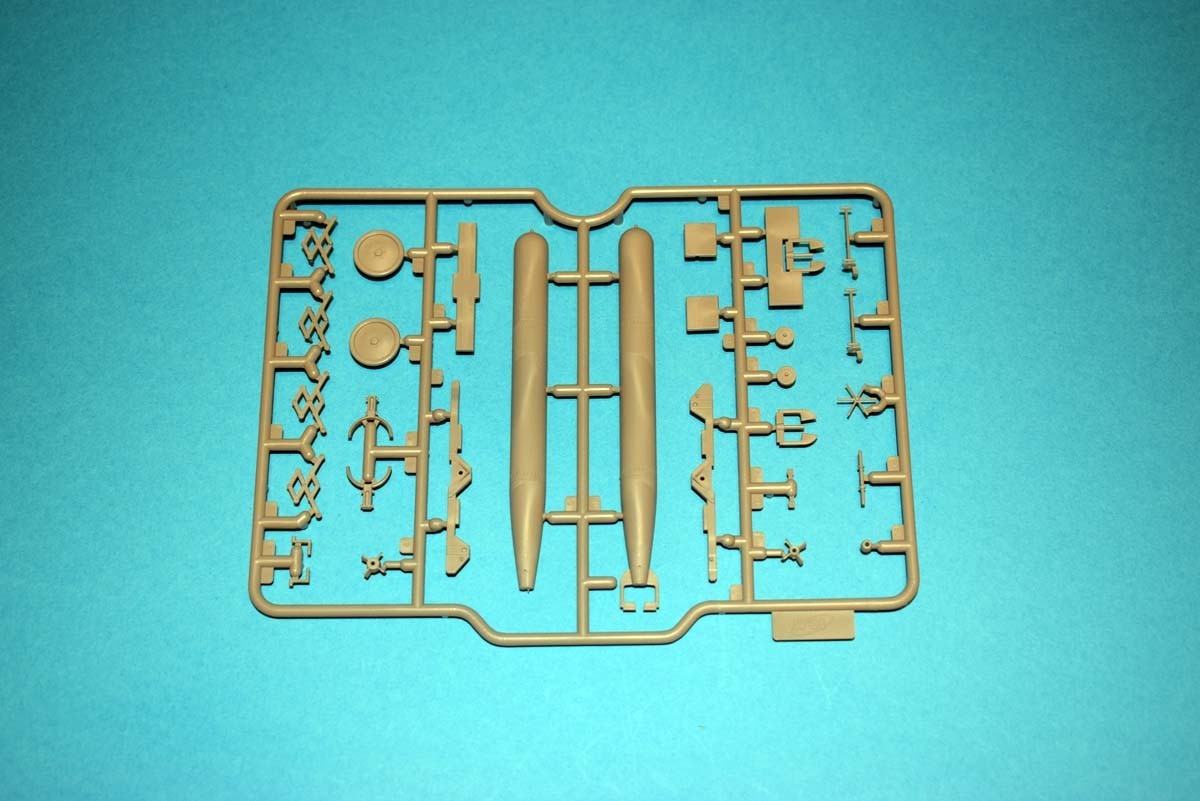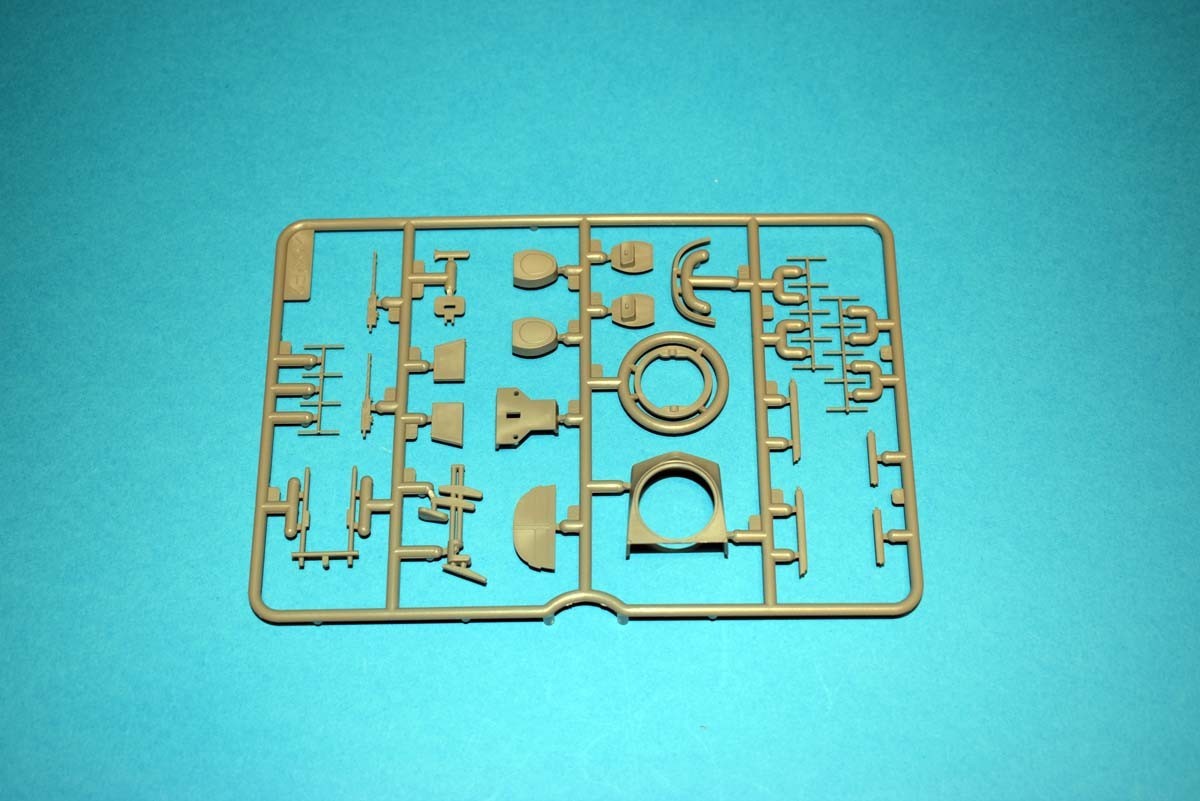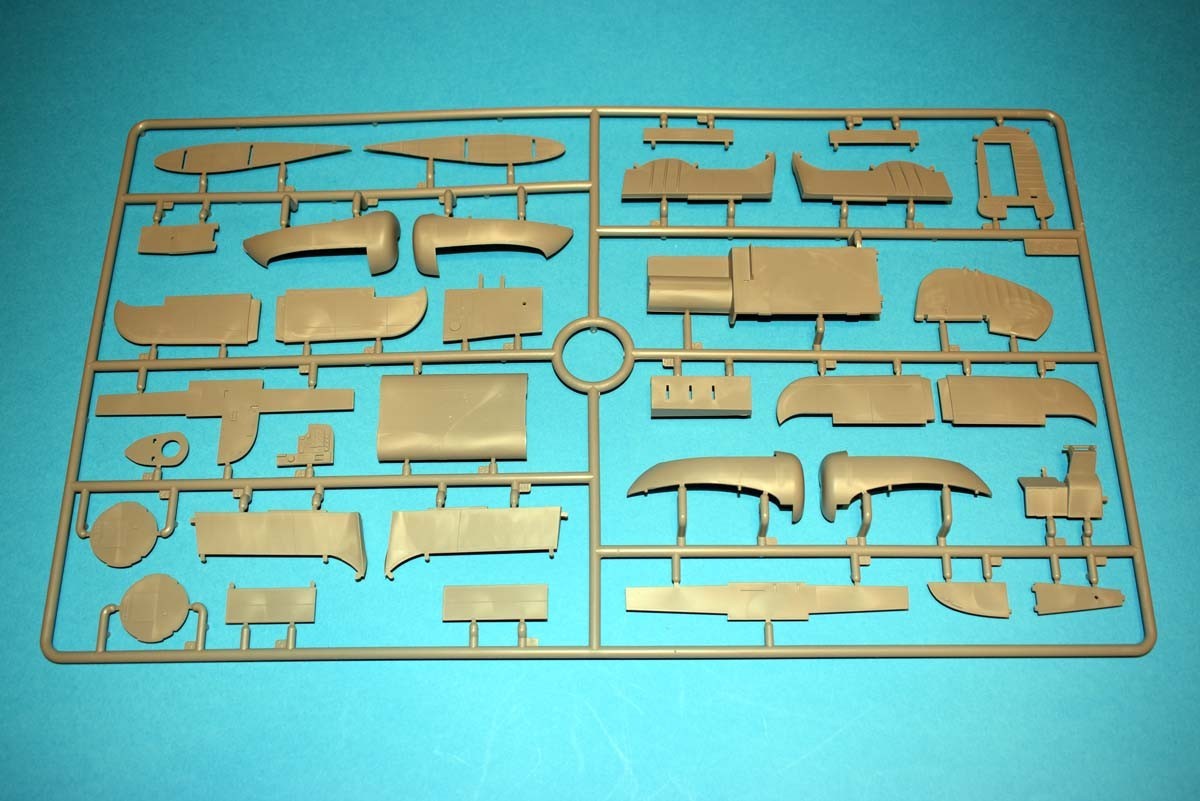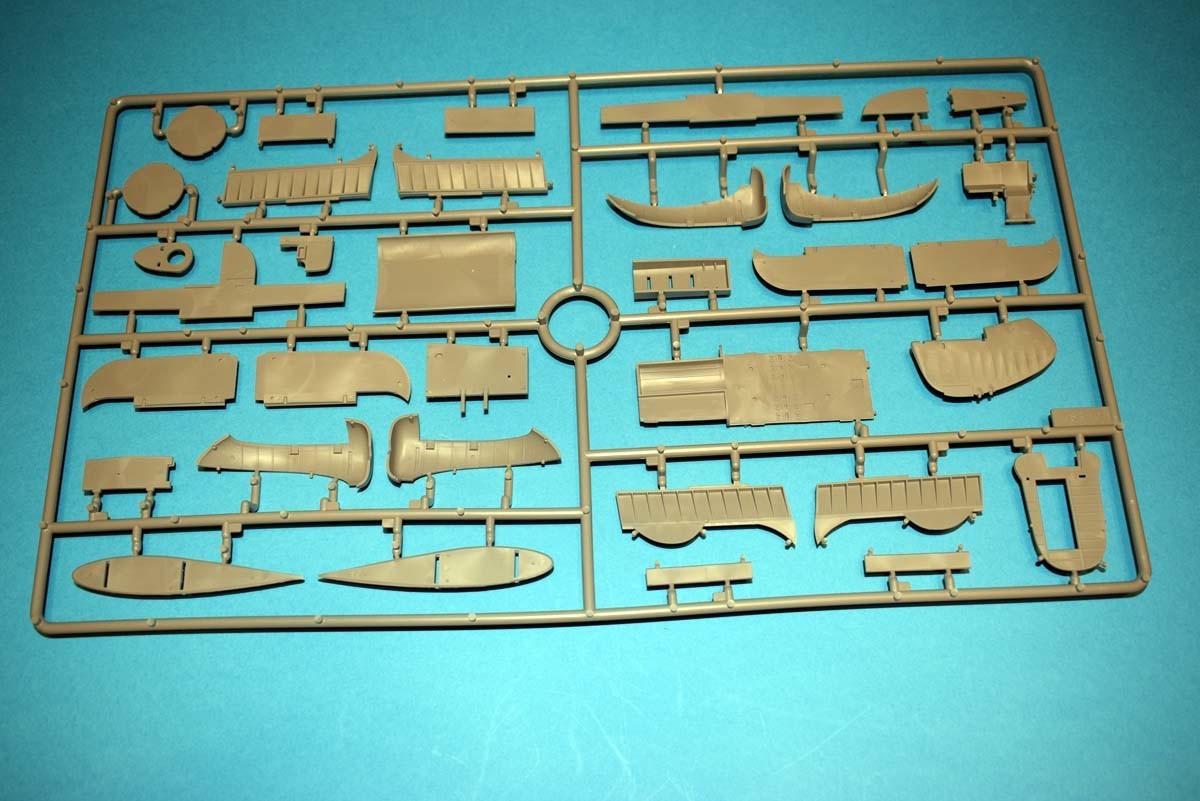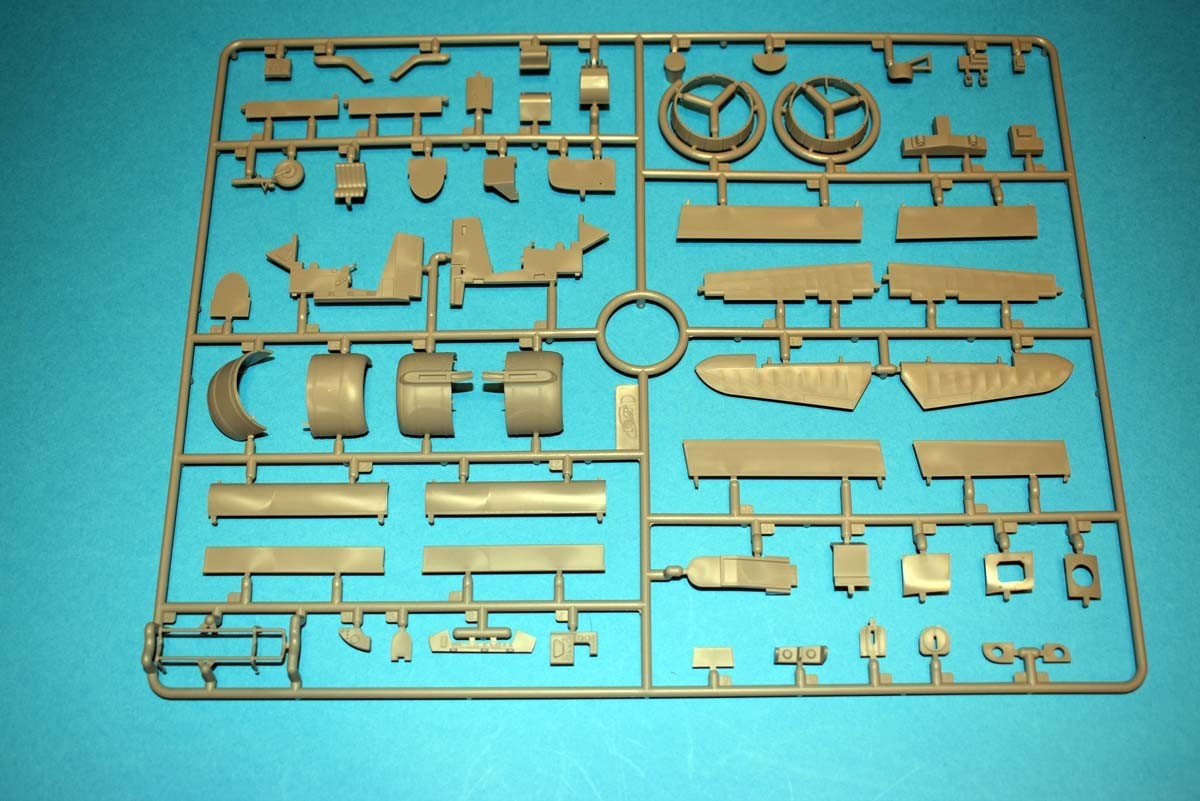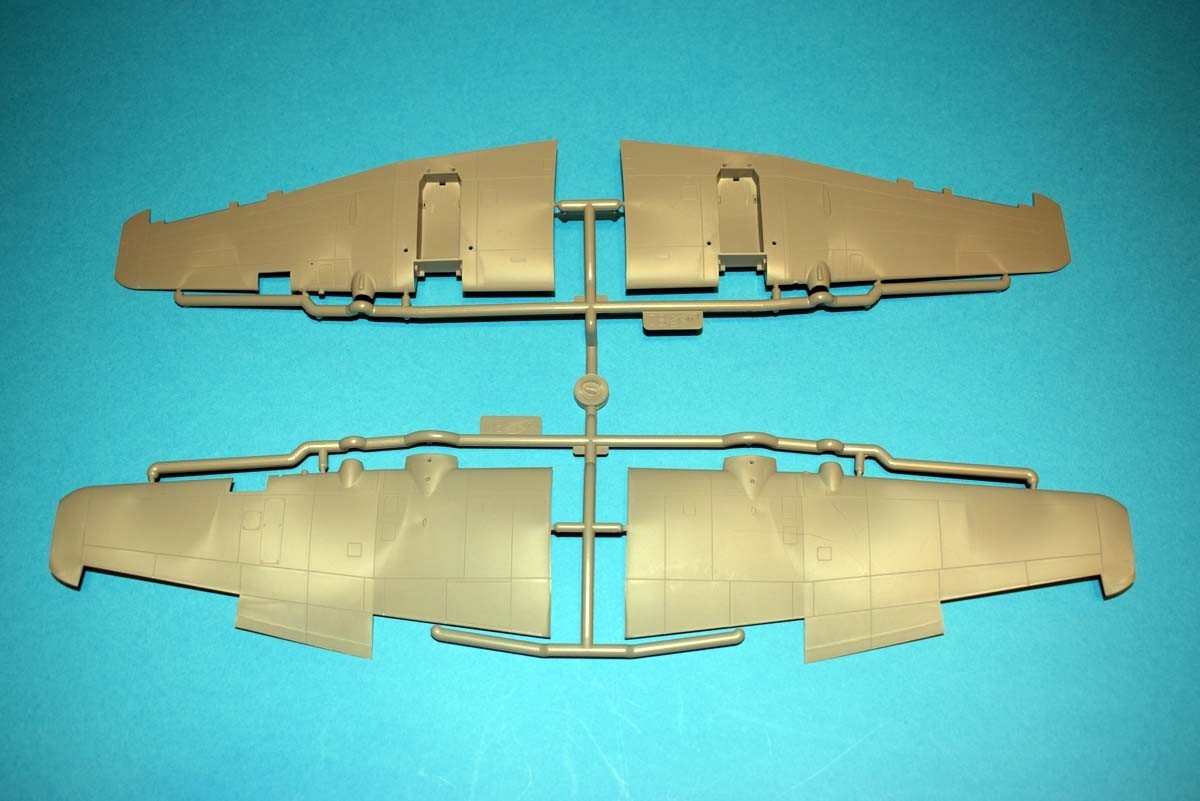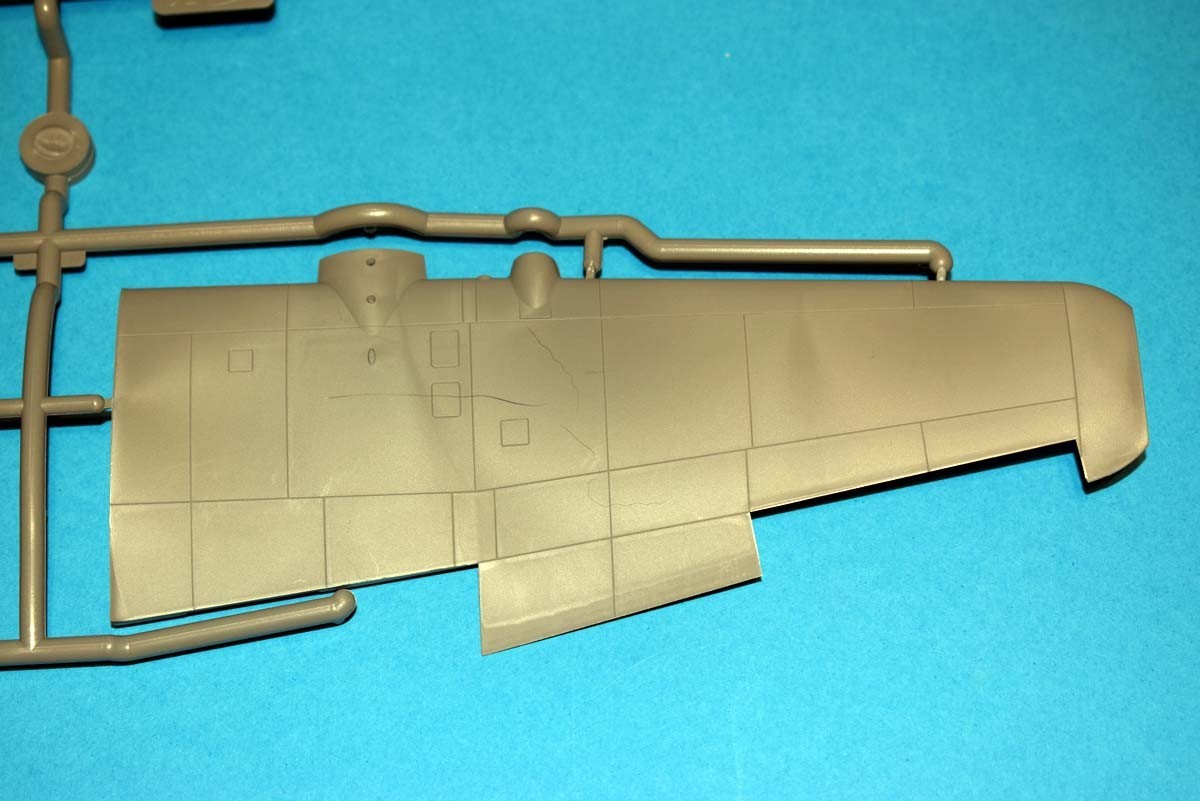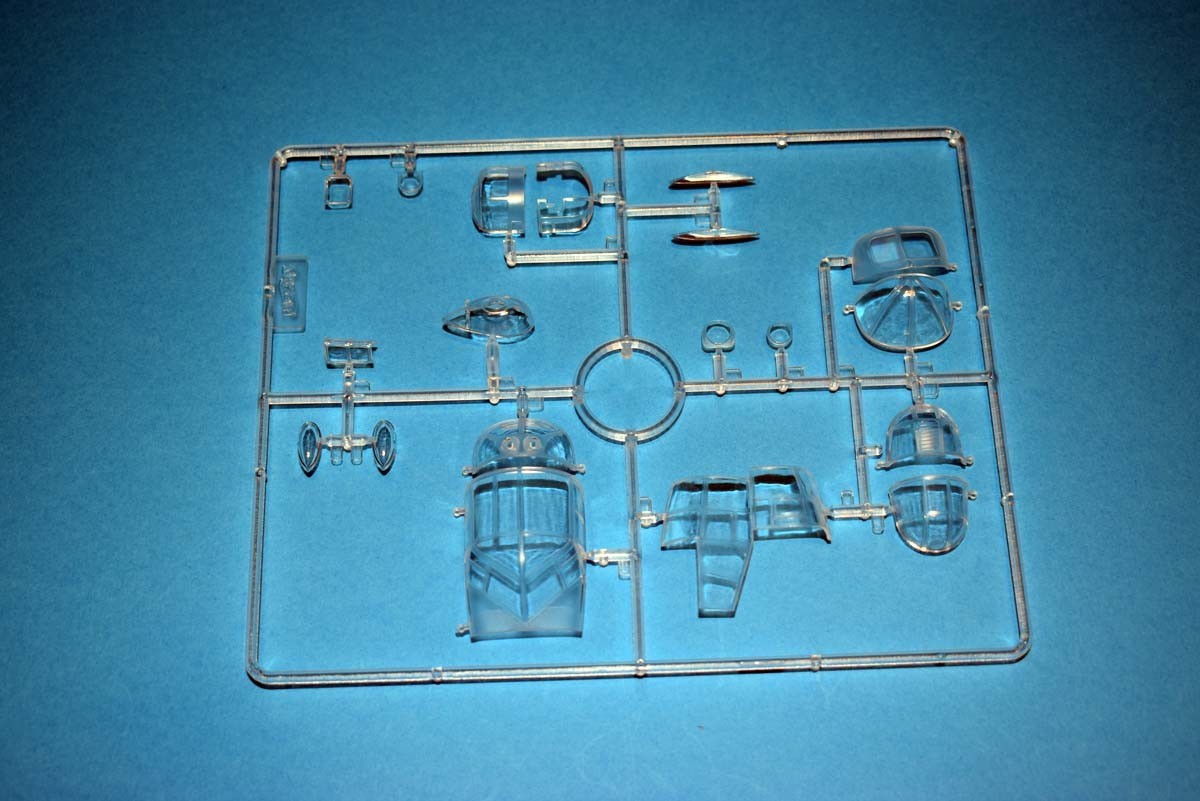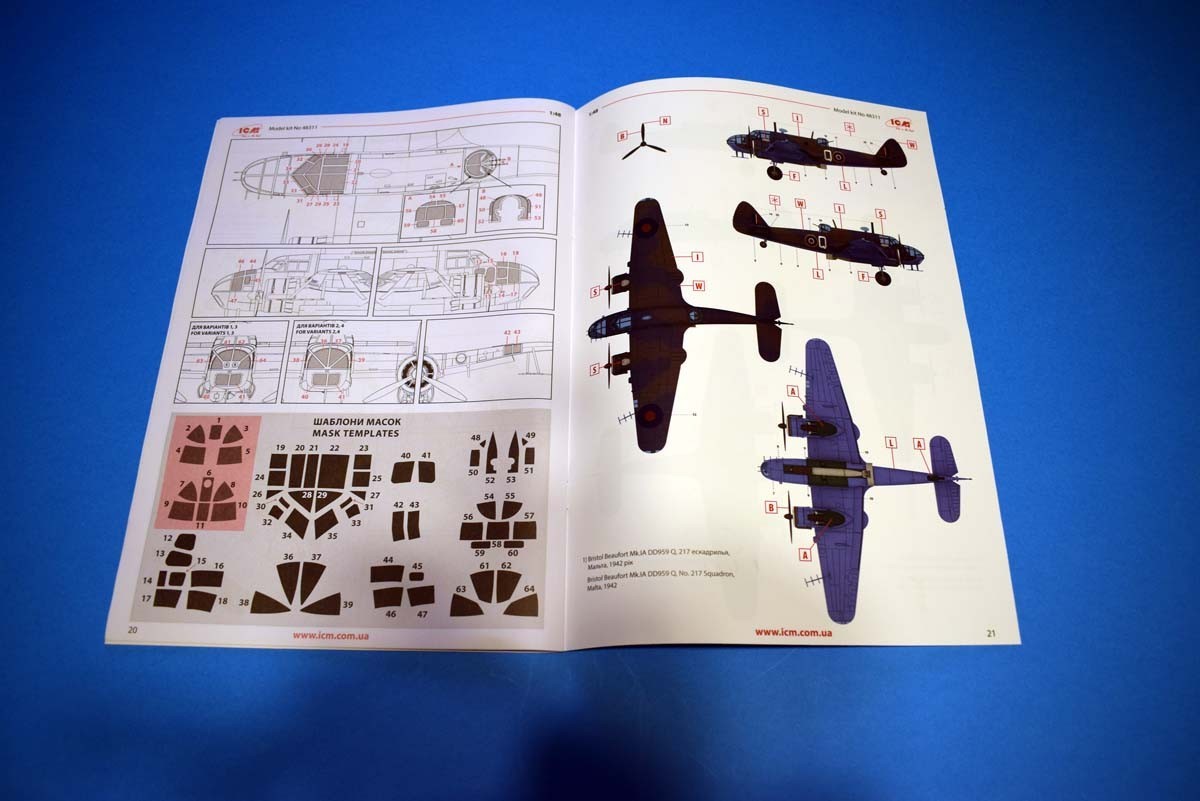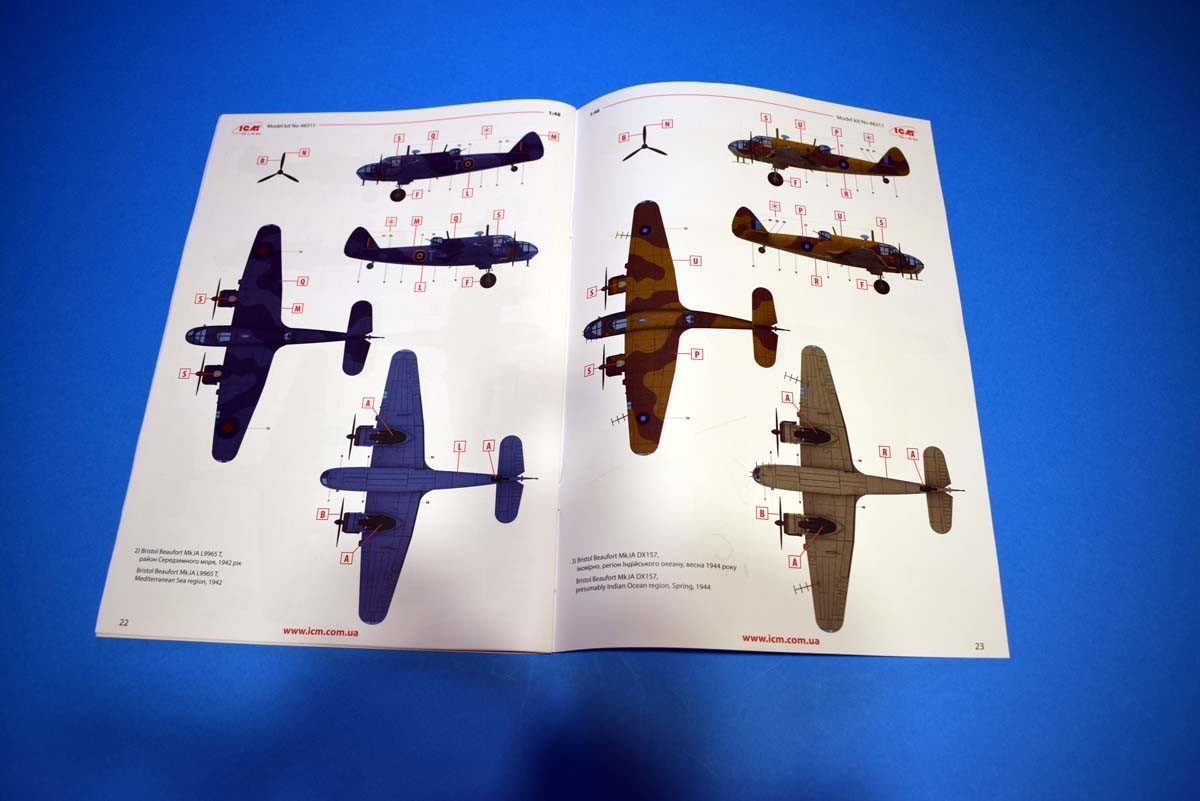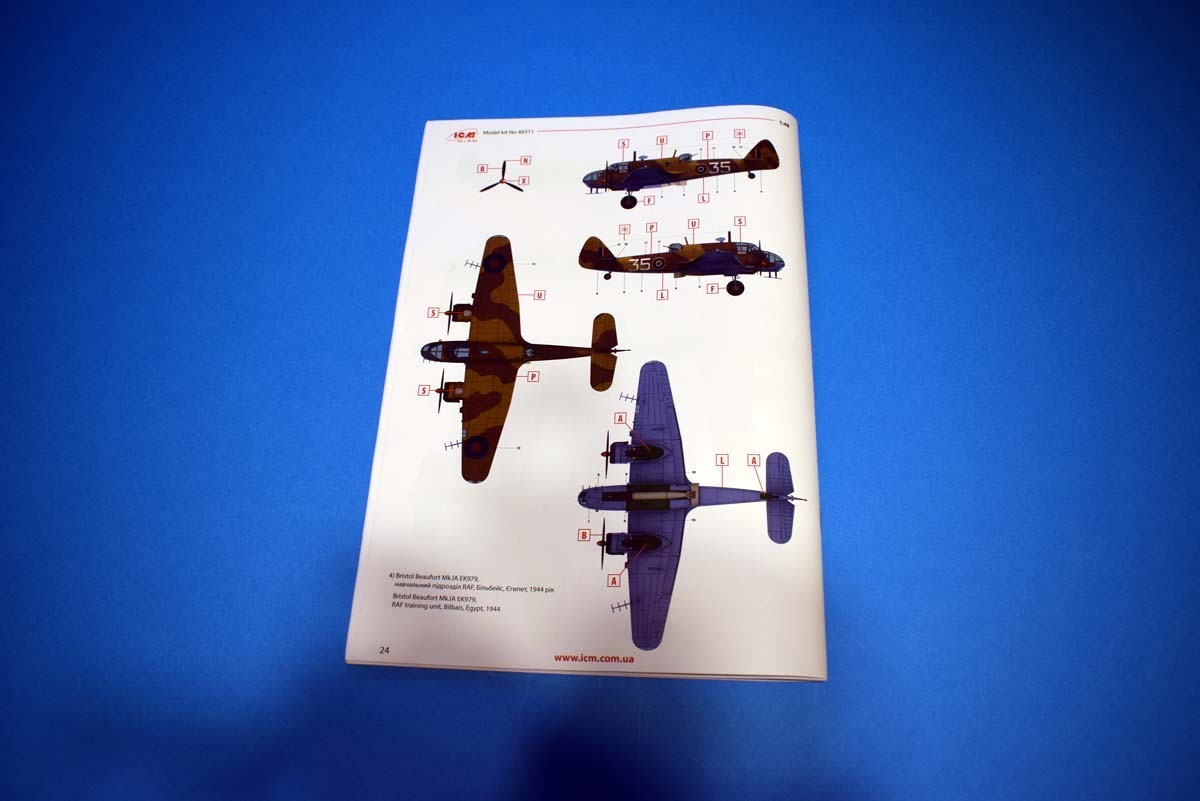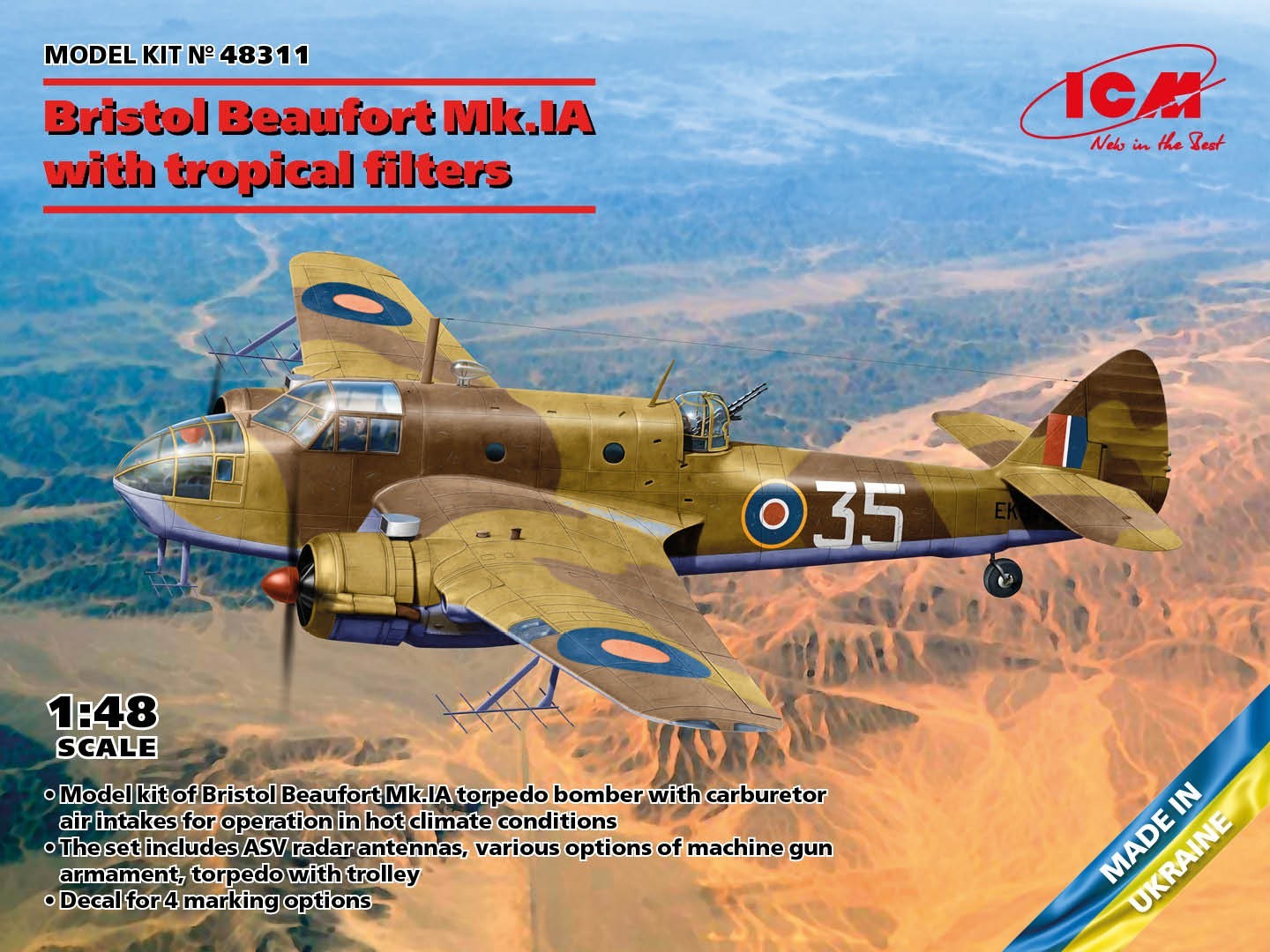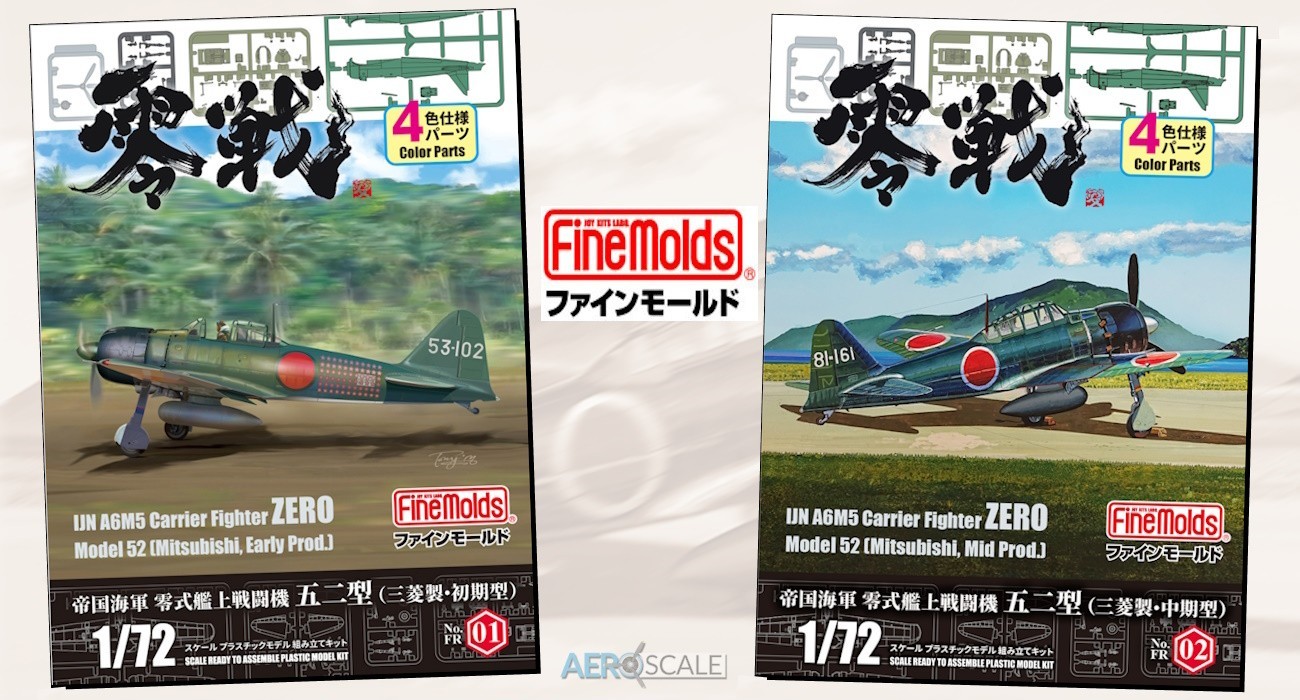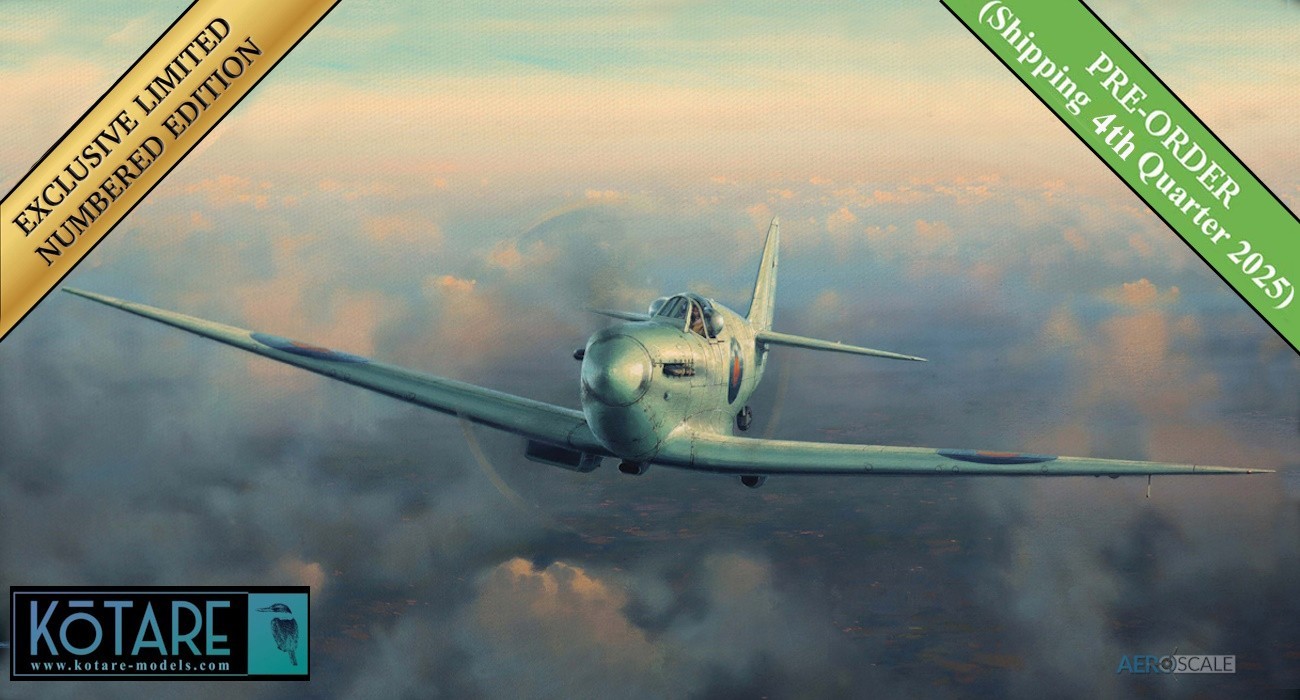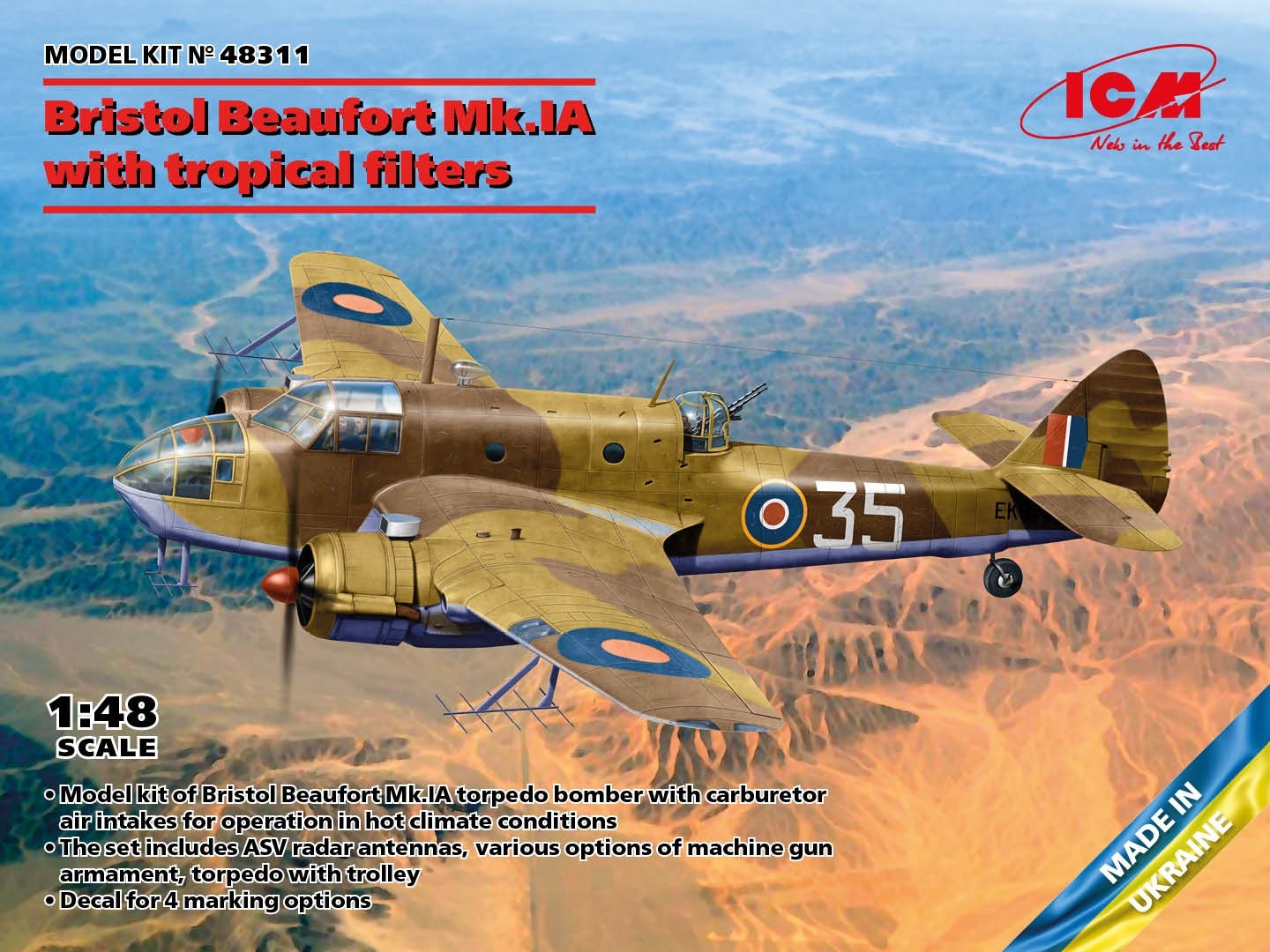
Introduction
The following introduction is as provided by ICM:
The Bristol Beaufort Torpedo bomber began to enter service with the RAF coastal command in late 1939. The aircraft was actively used to perform various tasks, and at its peak production was up to 30 machines per month. Later the Bristol Beaufort was improved, the composition of armorment and equipment changed. The Mk 1A had a new machine gun turret. Also ASV radar began to be installed on torpedo bombers, which were used to search for surface targets. This aircraft was on combat in the Mediterranean sea and North Africa. Operations in high temperature conditions also lead to the use of modified carburettor air intakes on Bristol Beaufort engine.
Review
This offering from ICM arrives in a flip top cardboard tray, with an additional card lid with a pleasing artwork on the top. On the inside a single plastic bag contains all of the sprues, which can lead to parts being warped, broken or knocked off of the sprue. In this example, I do see some parts that have been moved from their set position due to being twisted slightly. Flow lines are present in some of the larger parts, but no obvious damage has occurred in this example. There are some ejector pin marks, but I do not believe that any of these will need to be remedied. The decal sheet is protected inside the instruction booklet, with my only concern being that if exposed to damp, the decals will be easily damaged or destroyed.
The interior areas of the model have been well catered to, with ribbing, bulkheads and floor well represented. Fillets are also included to hide the wing root area that the modeller will very likely need to add some filler around this area. I would suggest Perfect Plastic Putty from Deluxe Materials as it can be easily cleaned up with a damp brush and so avoiding the need to sand in a restricted area. The interior detail itself extends from the nose to the rear turret and then a portion of the tail where the tail wheel sits. The cockpit of the model has a nice level of detail present, with decals provided for the instrument clusters - but the usual issue remains that the seats have no restraints replicated. Wings spars extend through the model providing the wings themselves a positive location when added and also a sturdy location that keeps then in the correct orientation. Some holes do need to be drilled in some areas, and I am pleased to see a drill size has been indicated for them.
The clear portions added from the interior, are of a good thickness but views of the interior are limited to what can be seen via the nose and cockpit glazing. The tail wheel is a disappointing aspect of the model, as it has been moulded as a single complete piece, which I feel gives it a poor representation. So, other than the tail wheel and harness detail I am happy with what is provided in this area of the model. I also like the option of the side fuselage firing position being open or closed and the gun retracted or exposed.
The flight surfaces of the model and flight control aspects are well represented in this release. There is some surgery indicated in the instruction booklet, including cutting segments out and drilling holes. I like again that the drill size is indicated, but disappointingly the drill locations are not clearly indicated and are more a case of “somewhere about there” - which to me is unacceptable. The flaps being separate does mean that you can position them as desired, however, a dislike on my part, is the wing tips are provided separately and I have yet to find a model where this joint is good, as you usually end up with high or low areas which are exceedingly difficult to remedy without damaging surface detail. All flight controls on the tail are again provided separately and so can be orientated as desired.
The engine nacelles have good detail on the inner faces of the wheel wells. Engine detail is good and will test the steadiness of the hand and clarity o the eye in some regards where the individual vents pipes are concerned - with these coming from every cylinder. The cowlings around the engine are not designed to expose any of these details, and so you will have to use on-line reference as regards how to cut the cowling's should you wish to expose the details. Propellers and nose cones look good to me, and the tropical air intake mounted on the top of the engine cowling looks good, when compared to the 1/32nd scale resin offering I have for another model. Surface detail on the exterior of the model is very pleasing as the recessed panel lines are of a good size, that once painted should not become flooded. On the nose of the aircraft you have 2 options of fixed machine guns or plain glazing.
The main landing gear can be assembled outside of the model, and not added until you are ready to do so. Detail is again of a very high standard, and the addition of some cables will add that extra fine detail. The fact that the under carriage does not have to be added will make painting of the model easier than it could be, and takes away an aspect that could be easily damaged.
The payload in the form of a torpedo is provided for the modeller as a separate kit, that can be assembled and displayed on a carriage, or mounted in the aircraft’s bay. That choice is up to you, and I like that the carriage has been provided in this release. Something that ICM has been doing for some time now, is providing mask templates for their releases, and for the modeller who cannot justify spending for an aftermarket version - it make painting heavily glazed models such as this an easier option than it would otherwise be. ICM has provided 4 finishing options for this release and these are as follows:
Bristol Beaufort M.1A DD 959Q, No 217 Squadron, Malta 1942
Bristol Beaufort M.1A L9965T, Mediterranean Sea Region 1942
Bristol Beaufort M.1A DX157, Presumably Indian Ocean Region, Spring, 1944
Bristol Beaufort M.1A EK979, RAF Training Unit, Bilbais, Egypt, 1944
Conclusion
This offering from ICM of a Bristol Beaufort M.1A in 1/48th scale is for me a preferred model to the original release, as something about appeals more to the eye to me. Externally detail is very good and does not really leave anything in the way of complaints. Inside the lack or harness detail on the seats will be very obvious through the large glazing, but the internal structures which are good will also be visible. The tail wheel being a single moulding is a disappointment for me, and the number of holes that need to be made and the parts that need to be cut away disappoint. Overall I like this release, but it is by no means perfect, but I would still buy it.

